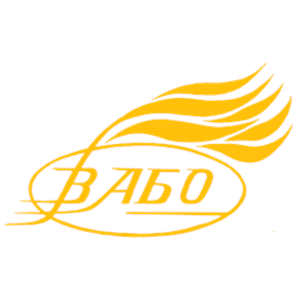ECOLOGICAL COMPARATIVE ANALYSIS OF THE EFFECTIVENESS OF DIFFERENT METHODS FOR DETERMINING IODINE
DOI:
https://doi.org/10.32782/2786-5681-2025-1.02Keywords:
iodine, environmental monitoring, determination methods, titrimetric analysis, photometry, selectivity, sensitivity, calibration curveAbstract
This study analyzes and compares the efficiency of six methods for determining iodine in natural objects. The accuracy, sensitivity, selectivity, and economic feasibility of these methods were evaluated. The results indicate that only three of the examined methods provide reproducible and objective results. However, two of these methods have significant limitations due to errors in initial methodological developments or the unavailability of key reagents. It was established that the oxidation method with subsequent application of urea and starch is promising for environmental monitoring due to its high sensitivity, rapid analysis, and environmental safety.The aim of this study is to assess the accuracy, sensitivity, and practical applicability of different iodine determination methods in natural objects and to identify the optimal method for environmental monitoring. The object of the study is the methods for iodine determination in natural objects, particularly in soil, plant, and animal tissues used in environmental monitoring. The research methodology is based on a comparative analysis of six iodine determination methods, which differ in their principles of action, sensitivity, accuracy, and selectivity. Experimental studies included testing each method on natural samples (soil, plant, and animal tissues), constructing calibration curves, and evaluating the reproducibility of the obtained results. Additionally, an economic feasibility analysis of the methods was conducted, considering reagent costs and analysis duration. Conclusions. Iodine monitoring in natural objects is essential for assessing its bioavailability and impact on living organisms. The determination of this micronutrient is complicated by its uneven distribution in the environment and chemical transformations, necessitating a comparative analysis of different analytical methods.Iodometric titration with sodium thiosulfate is a fast and simple method, making it optimal for samples with a simple matrix. For complex matrices, an extraction method is more appropriate, as it provides higher accuracy but requires additional safety measures. The method using urea and starch combines high sensitivity, rapid analysis, and environmental safety, making it a promising approach for environmental monitoring, agrochemistry, and the food industry. Thus, the choice of the optimal iodine determination method depends on the sample composition, accuracy requirements, and analysis conditions.
References
Гунчак Р.В., Седіло Г.М., Вовк С.О.. Вміст Йоду в ґрунтах та зерні злаків у зоні Полісся Волині. Науковий вісник ЛНУВМБТ імені С.З. Ґжицького. 2016. Т. 18. № 2 (67). С. 77–80.
Продукти харчові. Методи визначення йоду: ДСТУ 8911:2019. [Чинний від 2019-10-21]. К. : Держстандарт України, 2019. 25 с. (Національні стандарти України).
Загальні вимоги до компетентності випробувальних та калібрувальних лабораторій: ДСТУ EN ISO/IEC 17025:2019 (EN ISO/IEC 17025:2017, IDT; ISO/IEC 17025:2017, IDT) [Чинний від 2019-10-21]. К. : Держстандарт України, 2019. 25 с. (Національні стандарти України).
Морозова Т.В. Аспекти екологічного моніторингу. Київ, 2020. 380 с.
Мудрак О.В., Морозова Т.В. Екологічний моніторинг йоду в пасторальних екосистемах. Агроекологічний журнал. 2024. №. 2. С. 72–79. DOI: https://doi.org/10.33730/2077-4893.2.2024.305658.
Петренко О.Д. Ефективний і надійний контроль вмісту йоду в об’єктах навколишнього середовища – актуальне завдання сьогодення. Гігієна населених місць. 2015. № 65. С. 200–203. URL: https://surl.li/otqnyi
Романенко Г. О., Коваленко І. В. Оптимізація титрометричних методик визначення йоду в харчових продуктах. Наукові записки НУБіП. 2023. № 4(97). С. 48–53.
Emerson H. P., Qafoku N. P., Johnson Chr. D., Szecsody J. E., Doughman M. S., Mackley R. D., Kaplan D. I. A paradigm shift for evaluating natural attenuation of radioactive iodine in soils and sediments: Species-specific mechanisms and pathways, Journal of Environmental Management. 2025. 374. 124101. DOI: https://doi.org/10.1016/ j.jenvman.2025.124101
Hassan M. H., Khan R., Andreescu S. Advances in electrochemical detection methods for measuring contaminants of emerging concerns. Advances in Electrochemistry (Reviews). 2022. 2(6). DOI: https://doi.org/10.1002/elsa.202100184
ISO 13137:2022 Workplace Atmospheres – Pumps for Personal Sampling of Chemical and Biological Agents – Requirements and Test Methods.
Muller C. J. F., Joubert E., Chellan N., Miura Y., Yagasaki K. New Insights into the Efficacy of Aspalathin and Other Related Phytochemicals in Type 2 Diabetes-A Review. J Mol Sci. 2021. 23(1), p. 356. DOI: https://doi.org/10.3390/ ijms23010356
Oblak A., Imperl J., Kolar M., Marolt G., Krhin B., Zaletel K., Gaberscek S. Introduction of a spectrophotometric method for salivary iodine determination on microplate based on Sandell-Kolthoff reaction. Radiol Oncol. 2024. 58(3). P. 357–365. DOI: https://doi.org/10.2478/raon-2024-0035
Oliveira A. A., Trevizan L. C., Nóbrega J. A. REVIEW: Iodine Determination by Inductively Coupled Plasma Spectrometry. Applied Spectroscopy Reviews, 2010. 45(6). P. 447–473. DOI: https://doi.org/10.1080/05704928.2010.502207
Riley B. J., Beck Ch. L., Evarts J. S., Chong S., Lines A. M., Felmy H. M., … Heiden Z. M. Analytical capabilities for iodine detection: Review of possibilities for different applications. AIP Advances. 2024. 14 (8): 080701. DOI: https://doi.org/10.1063/5.0208591
Smith D., Jones A. Advances in Iodine Detection Techniques for Environmental and Biological Monitoring Analytical Chemistry Research. 2021. 32. 104028.
Wang Y., Liu X., Zhao H. Development of a Novel Iodine Ion-Selective Electrode for Rapid Analysis in Food Matrices. Journal of Electroanalytical Chemistry. 2020. 873. 114383.
Zielinska D., Szawara-Nowak D., Zielinski H. Comparison of spectrophotometric and electrochemical methods for the evaluation of the antioxidant capacity of buckwheat products after hydrothermal treatment. J Agric Food Chem. 2007. 55(15). P. 6124–6131. DOI: https://doi.org/10.1021/jf071046f
Zimmermann M. B. Iodine deficiency. Endocr Rev. 2009. (4), p. 376–408. DOI: https://doi.org/10.1210/er.2009- 0011







